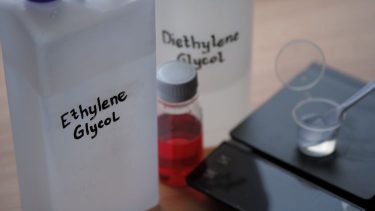
Regulators, medicine manufacturers and suppliers have been urged by the World Health Organization (WHO) to take action against contaminated medicines in the supply chain. This is based on recent incidents of over-the-counter cough syrups with high levels of diethylene glycol (DEG) and ethylene glycol (EG).
The lingering menace of diethylene glycol / ethylene glycol adulteration
Over the past four months, cases from at least seven countries have been associated with over 300 fatalities in three of these countries. Most are young children under the age of five.
DEG and EG are toxic chemicals used as industrial solvents and antifreeze agent. They can be fatal for humans and should never be found in medicines.
Based on country reports, WHO has issued three global medical alerts addressing these incidents of contaminated medicines:
- The Medical Product Alert N°6/2022 on 5 October 2022 focused on the outbreak in the Gambia
- Medical Product Alert N°7/2022 on 6 November 2022 focused on Indonesia
- Medical Product Alert No1/2023 on 11 January 2023 focused on Uzbekistan.
WHO’s medical product alerts were rapidly disseminated to the national health authorities of all 194 WHO Member States, requesting:
- The detection and removal of contaminated medicines from circulation in the markets
- Increased surveillance and diligence within the supply chains of countries and regions likely to be affected
- Immediate notification to WHO if these substandard products are discovered in-country; and otherwise inform the public of the dangers and toxic effects of the substandard medicines at issue.
To control dissemination of contaminated medicines, the World Health Organization calls on:
Regulators to:
Detect and remove from circulation in their respective markets any substandard medical products identified in the WHO medical alerts as potential causes of deaths and disease.
Ensure that all medical products in their respective markets are approved for sale by competent authorities and obtainable from authorised/licensed suppliers in the supply chain.
Assign appropriate resources to improve and increase risk-based inspections of manufacturing sites within their jurisdiction in accordance with international norms and standards.
Increase market surveillance including risk-based targeted testing for medical products released in their respective markets including informal markets.
Enact and enforce, where relevant and as appropriate, laws and other relevant legal measures to help combat the manufacture, distribution and/or use of substandard and falsified medicines.
Medicines manufacturers to:
Only purchase pharmaceutical grade excipients from qualified and bona fide suppliers within the supply chain.
Conduct comprehensive testing upon receipt of supplies and before use in manufacture of finished products.
Provide assurance of product quality including through certificates of analyses based on appropriate testing results.
Keep accurate, complete and proper records of purchase of materials, testing, manufacture, and distribution to facilitate traceability during investigations in case of incidents.
NEWS: What can we learn from contamination control failures?
Suppliers and distributors of medical products to:
Always check for signs of falsification and physical condition of medicines and other health products they distribute and/or sell.
Only distribute and/or sell medicines authorised by, and from sources approved by, competent authorities.
Keep accurate, complete and proper records relating to the medicines and their distribution and/or sale.
Engage competent personnel to handle medicines and provide advice to the public on appropriate use of the medicines.
Mitigating health risks of substandard and falsified medical products
WHO will continue to work with the Member State Mechanism on substandard and falsified medical products in implementing its mandate to promote effective collaboration in the prevention, detection and response to substandard and falsified medical products to save lives.
The post WHO urges supply chain to take action on contaminated medicines appeared first on European Pharmaceutical Review.

